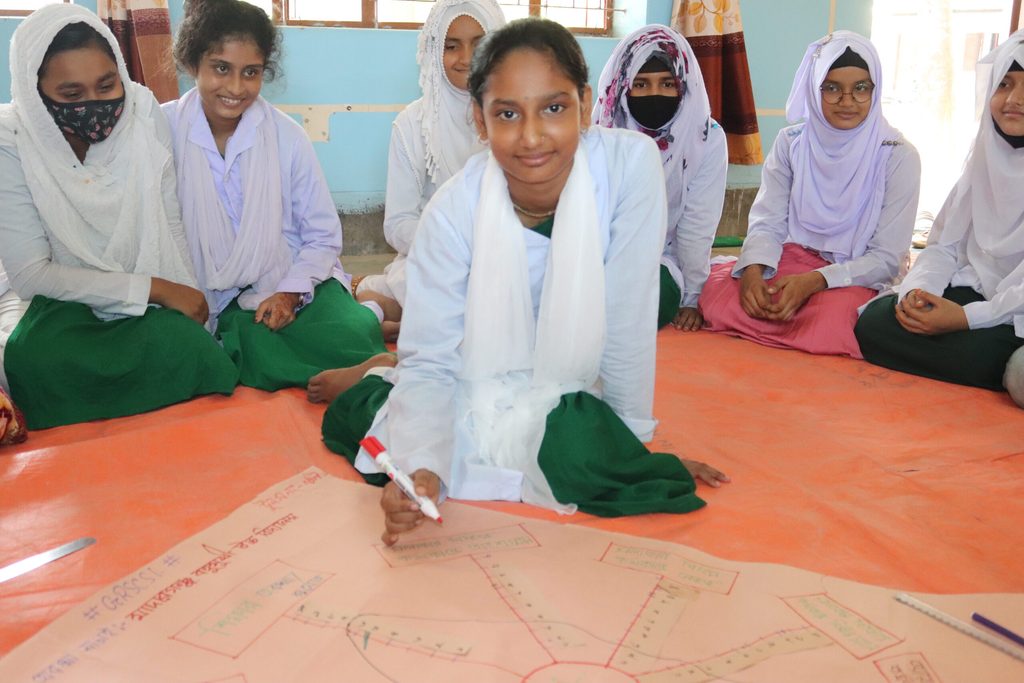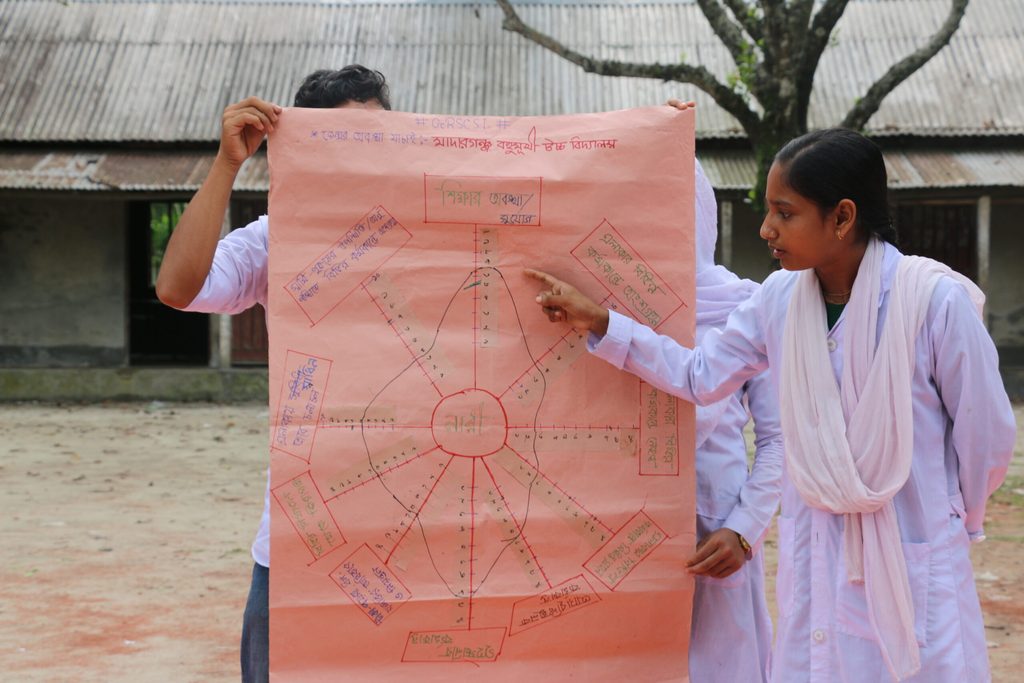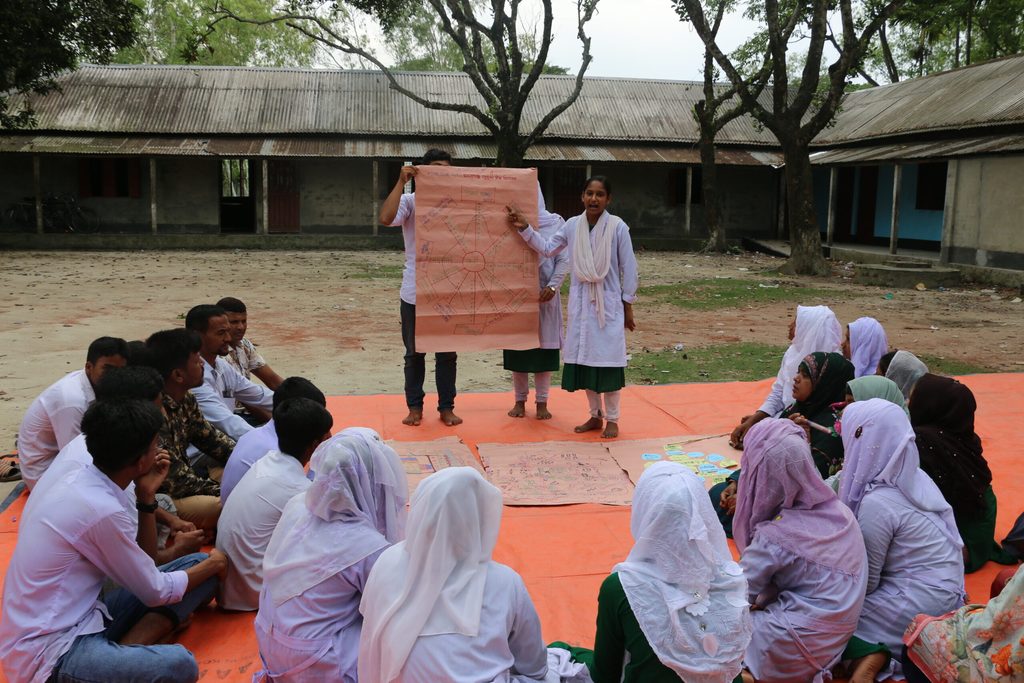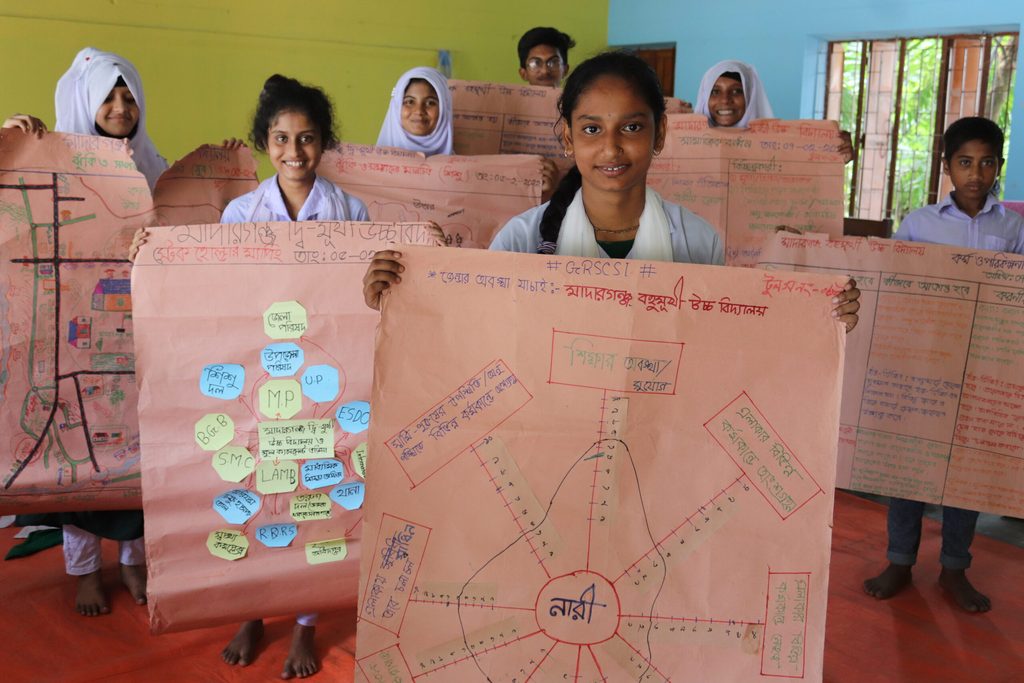Student task force identifies local disaster risks
Shadona, 14, from Bangladesh, is leading a student task force to identify and mitigate risks caused by disasters in her school and community.

Shadona, 14, lives in Kurigram district in one of the most disaster-prone areas in Bangladesh. Floods, storms, and lightning hit the area every year. These disasters cause huge damage to livelihoods and infrastructure, especially the roads which are severely disrupted every time. Students suffer as they are unable to get to school. Shadona believed that she could play an active role in supporting her peers to better prepare for disasters.
With the support from her school and community, in September 2021, Shadona became a member of a student task force as part of Plan International’s Gender Responsive School and Community Safety Initiatives (GRSCSI) project.
Disasters affect girls’ rights
By participating in trainings with the Student Task Force, Shadona came to know about different tools and processes to assess risks, and how hazards impact the lives of students, especially girls.

Education is a fundamental right, however, in many cases, girls cannot continue their education due to the impacts of hazards. Multi-hazards cause disasters which amplify barriers such as child marriage that stand in the way of girls’ education.
“We identified the situation girls face in our school and local area. This is a piece of strong evidence. Referring to the findings of this tool, we can easily raise our voice where applicable,” said Shadona.
“Earlier, there were problems but students did not know how to raise them. Now we have a safe space for students and teachers. They are more comfortable to speak up about their difficulties,” said Jahanara Begum, Assistant Teacher.

Before the project, there were many problems which meant Shadona’s school was not a safe learning environment. Using the Multi-Hazard Risk Assessment, Shadona and her team could assess the problems.
Reducing the risks
After identifying the risks in her school and local area, she and her team members shared the result with students, teachers, community members and the local government.
With the effort of Shadona and her task force members, the education department allocated budget for the renovation of classrooms, wash blocks and common rooms for girls.
“Based on the findings of the risk assessment, we have successfully mobilised funds. We have already completed the renovation work on 2 classrooms. Now students feel more comfortable in the classroom than earlier,” said the school’s Headteacher.
Gender Responsive School and Community Initiative (GRSCSI): Plan International’s project which supports schools and communities to be better prepared for disasters using the Safe School Comprehensive Framework, and supporting youth-led initiatives by the School Safety Champions through gender-sensitive DRR/CCA trainings and the Multi-Hazard Risk Assessment (MHRA) mobile app.

Categories: Emergencies, Youth empowerment


